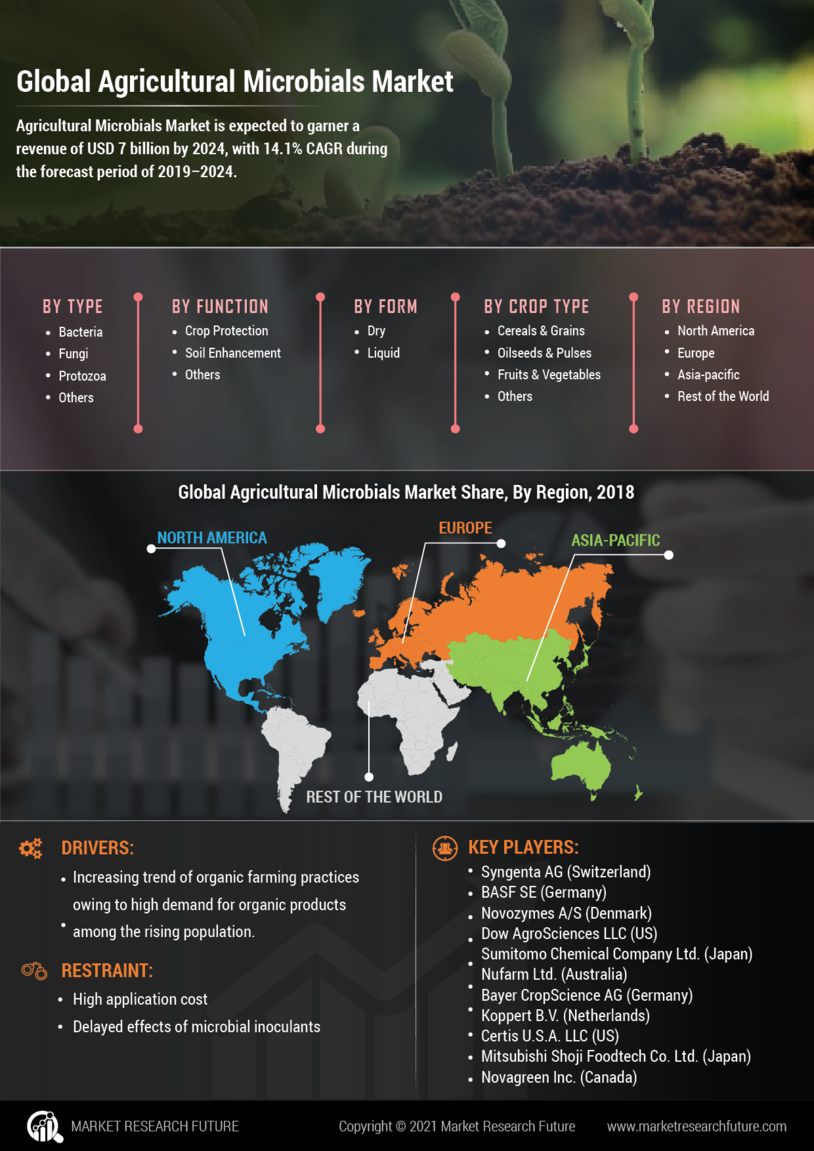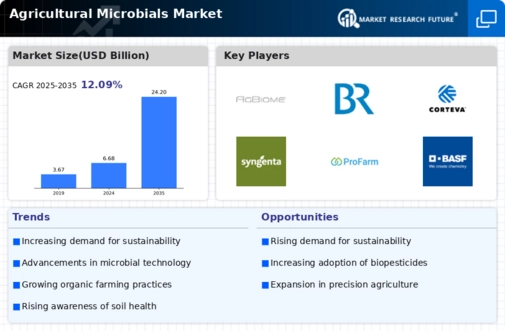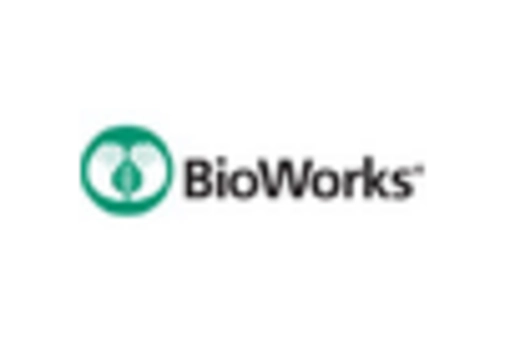The Agricultural Microbials Market is characterized by a dynamic landscape where innovation and sustainability play crucial roles. As the agricultural sector increasingly prioritizes eco-friendly solutions, the demand for microbial products has soared.
These products, ranging from beneficial bacteria to fungi, are essential in enhancing soil health, promoting plant growth, and protecting crops from pests and diseases.
The market witnesses fierce competition driven by advancements in biotechnology, regulatory support, and the evolving needs of farmers seeking sustainable alternatives to chemical fertilizers and pesticides.
Key players are vying for market share by investing in research and development, forming strategic partnerships, and expanding their product portfolios to cater to a diverse range of agricultural applications.
This competitive environment is further elevated by the growing awareness of the benefits of microbial solutions, which has attracted new entrants and fostered innovation across the sector.
Ginkgo Bioworks stands out in the Agricultural Microbials Market due to its exceptional capability in synthetic biology and its focus on developing tailored microbial solutions for agriculture.
The company's extensive platform allows for the rapid design and deployment of custom microbes, providing significant benefits to crop production and sustainability. Ginkgo Bioworks' strength lies in its robust technological foundation, encompassing cutting-edge gene editing, fermentation processes, and scalable production methods.
Their collaborative approach with agricultural partners enhances market presence, allowing them to bring innovative solutions to farmers much faster than traditional methodologies.
This competitive edge makes Ginkgo Bioworks a formidable player in the agricultural microbials sector, positioning them well to meet the increasing demand for efficient, sustainable agricultural practices.
AgBiome is another prominent player in the Agricultural Microbials Market, recognized for its innovative approach to developing products that harness the power of naturally occurring microorganisms.
The company is notable for its proprietary platform, which emphasizes understanding and utilizing the plant microbiome to create effective biological solutions.
Key products from AgBiome include bio-based pesticides and inoculants that have been shown to enhance crop resilience against environmental stresses. The company has established a solid market presence through partnerships with major agricultural enterprises, which have bolstered the distribution of its microbial solutions.
AgBiome's strengths include its strong research foundation and a commitment to sustainability, which resonate with the growing preference for environmentally friendly alternatives among farmers. Additionally, the company has engaged in strategic mergers and acquisitions, allowing for expanded capabilities and market reach, further solidifying its position within the global agricultural microbials landscape.



















Leave a Comment